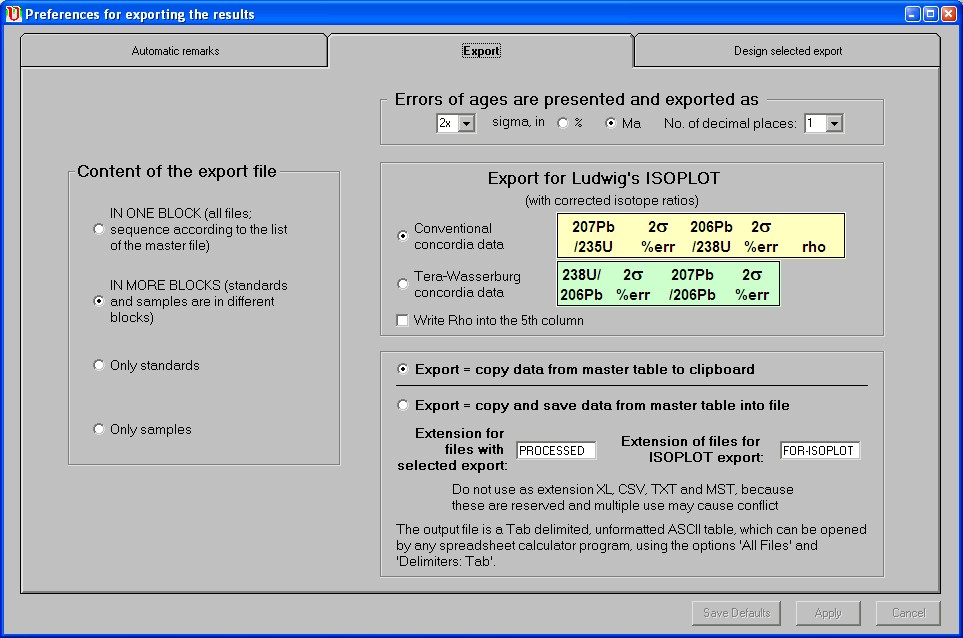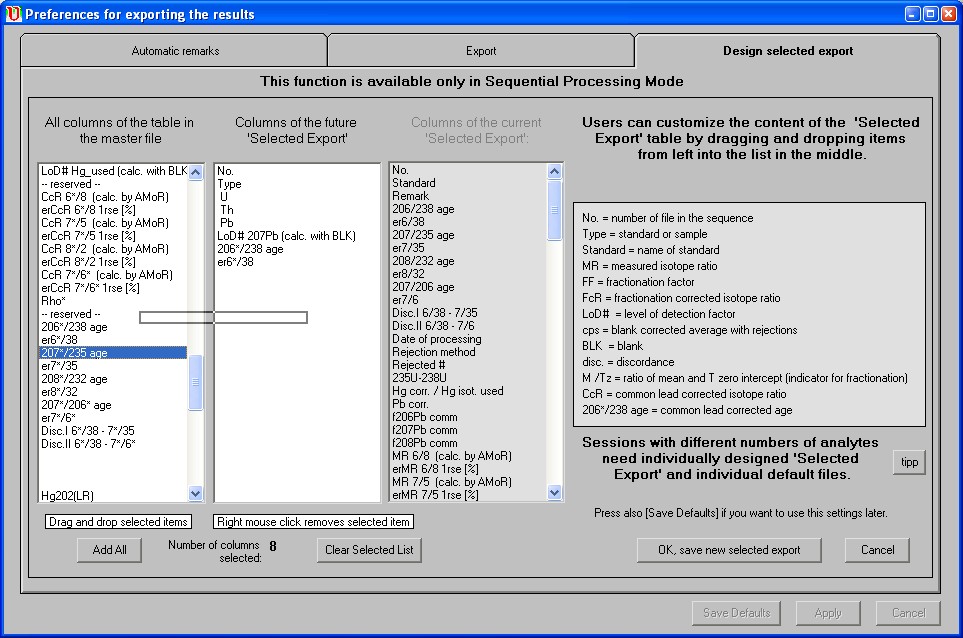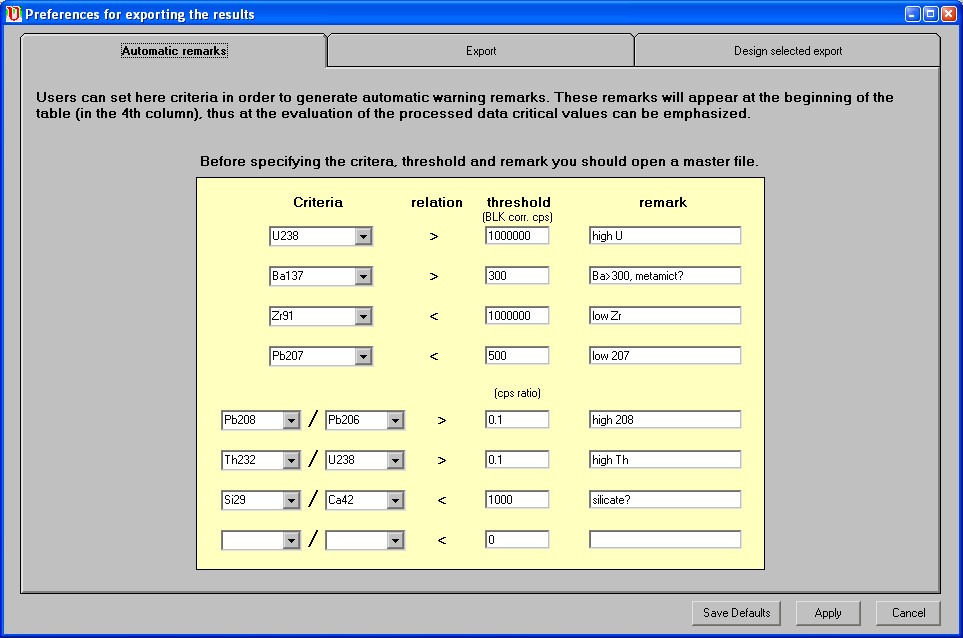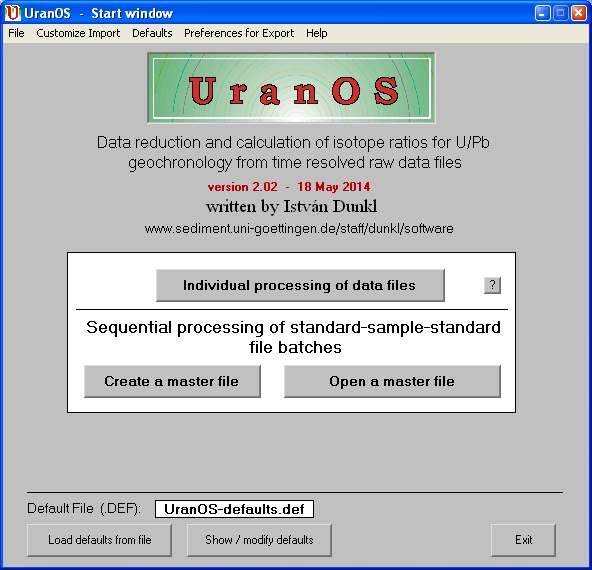
Main window at individual processing of data files:
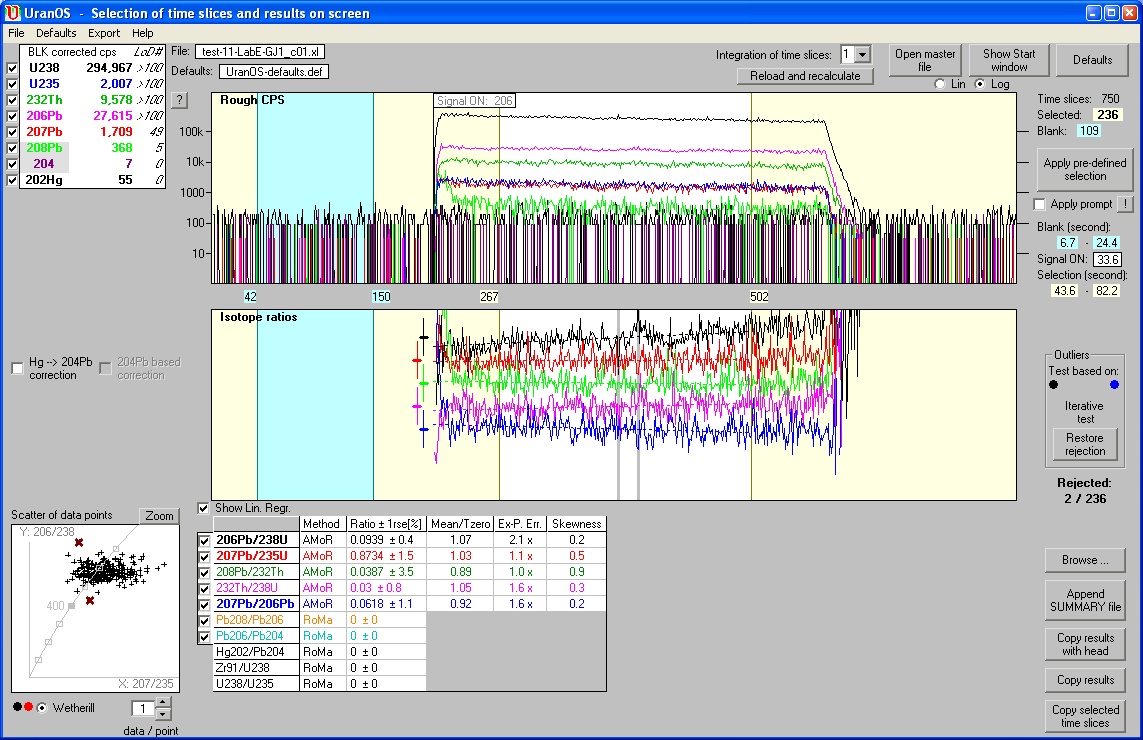
UranOS
Data reduction program for time-resolved LA-ICPMS U-Pb analyses
The program
runs in two modes:
(i) individual data file processing (for learning and testing file formats)
(ii) sequential processing of bracketed standard-sample-standard file series
performing drift correction according to the nominal isotope ratios of standards.
Major features:
-
standalone, no plug-ins required,
- Windows based, but works on W environment installed under MAC and Linux,
- the program assumes equal time between acquisition of files,
- universal input, any kind of data tables can be opened,
- UranOS recognizes standard files, and the user can specify the primary and
secondary standards,
- constants and preferences are stored in personal default files,
- prompt visualization of cps values and isotope ratios,
- quick selection of time slices and blank by mouse clicks or by the pre-set
values,
- pre-defined 'laser on' detection and signal selection criteria,
- option for selection refinement (needs powerful CPU),
- batch processing, re-processing of sequences by one click,
- common Pb correction (204), (207, 208 in preparation),
- iterative outlier test for rejection of spikes,
- four averaging methods for the down-hole data, incl. T-zero intercept,
- drift correction by linear, log, polynom. regressions,
- plotting of residuals of standard measurements for quick visual evaluation,
- user-designed export table format,
- all details of processing are archived in the data table,
- logging generates for each sequence a 'Data Reduction Synopsis',
- all equations explained in the Help.
Short
introduction to UranOS (PDF, 0.3 Mb)
I. Dunkl, T. Mikes, D. Frei, A. Gerdes, R. Tolosana-Delgado
and H. von Eynatten
(Göttingen, Stavanger, Cape Town, Frankfurt and Freiberg)
Equations used for the calculations by UranOS (PDF, 0.1 Mb)
Comparison
of UranOS and Excel calculated values (XLS, 0.1 Mb)
(of course, the results are identical ... ;-)
Processing
tool for the exported result (XLS, 2.6 Mb)
This is an Excel page system that customizes the reduced LA-ICPMS data for the
comfortable usage/plotting/exporting:
(1) for Isoplot, (2) for Andersen's calculation, (3) for Age-Display, and (4)
provides common Pb calculation and (5) a formatted output table.
System required:
- Processor
faster than 1500 MHz recommended.
- Screen resolution of at least 1024 x 768 pixels (smallest monitor tested:
12").
- Each computer needs an installation procedure once. New versions of the EXE
file of the program can be run without reinstallation, only the old version
of the executable should be replaced by the new one.
- The current version was tested under XP, W7, W8, Linux and MAC OSX (+Parallels
Desktop).
- The program optimized to work with US/UK settings of the Windows system. Use
dot as decimal separator and comma as list separator to avoid confusions. (Can
be set in: Start / Control panel / Regional Options).
- It is recommended to show the extensions of the files in your system (disable
the following option: My computer / Tools / Folder Options / View / Hide file
extensions for known file types).
Limitations:
- The present version can process data files up to 50 isotopes
and up to 6000 time slices. At the sequential processing data from 2000 files
can be stored in the master file.
Running
on MAC:
Frank Lisker runs without hindrance Trackkey on MAC with a PC emulation. Citation
from his letter of 31/8/2004:
The easiest, smoothest running, most distributed (and most expensive) one
is "Virtual PC" (current version: 6.1). Trackkey works excellently on this platform,
and the respective files can be transferred straightly from and to the Mac disc.
The only alternative I tested is "MacBochs", a rather intricate freeware which
can be downloaded from ttp://bochs.sourceforge.net/.
Frank Lisker - University
of Bremen
In 2008 I got another letter from a MAC user: It runs well under MAC Operating System 10.5.3 called "Leopard". You have to run "Parallels Desktop", which gives you the possibility to install any operating system you like - XP, Linux, Ubuntu - and they run in an window under Leopard ... thats preety nice! Parallels Desktop is not very expensive by the way.
Status: Freeware, under continuous development and tests. Contact István for the link to download the actual version: istvan.dunkl _X_geo.uni-goettingen.de.
Installation and quick start:
(1):Download
the complete setup kit (v. 2.06a, 23 Nov. 2015) - 5.9 Mb, zipped
Unzip the package and run setup. Sometimes the system reports version conflict:
"Do you want to keep...?" answer, please: YES.
(2):Download
the "UranOS-Defaults" directory - 1.8 Mb, zipped
Unzip the files and place them exactly in the C:\UranOS-Defaults directory.
Later this directory can be moved somewhere else (see description). UranOS works
only if these additional files (settings, example data, etc.) are available.
If you do not have administrator right on the PC, then place C:\UranOS-Defaults directory in an other drive. In this case modify the "start_path_UranOS.txt" file in the program directory of UranOS. (e.g. the content can be: "e:\UranOS-Defaults", according to the available particions). Save it as text file, without any format.
(3): Run the program first in 'Individual processing' mode. Study the basic functions, select blank and signal intervals, etc.
(4): Study the available options in the Default Window.
(5): Run UranOS in 'Sequential processing' mode; open first the FULLY_PROCESSED example master file in the "C:\UranOS-Defaults\Test-Sequence-01" directory. Play with it.
(6): Open the STDs_PROCESSED example master file. Now you can study the possible ways of drift correction.
(7): Create a new master file. Perform the standard measuremenst and the drift and fractionation corrections. Simply play with the data, try different calculation methods (e.g. T-zero intercept, arithmetic mean of ratios /AMoR/).
(8): Load the "UranOS-defaults_for_Multi_Elem.def" default file. Open the example master files in the "Test-Sequence-02-Multi-Elements" directory. Here you can manage the visualization of the additional (not age-relavant) isotopes.
(8): If necessary modify the import for the format of your data files. Open a file using 'Individual processing' mode. Click the menu in the Start Window: 'Customize Import' / 'Open example dat file' / 'Show file structure'. Modify accordingly the import filter and save the Default file.
At download it is recommended to send an e-mail to be a registered user and receiving information on the updates in the future.
Reporting problems
If you observe any malfunction, then please try to reproduce it and send the data file & default file with exact description of the conditions. I will try to identify the problem and fix it.
Thanks in
advance!
Start
window:

Main window at individual processing of data files:

Main window at
sequential processing of data files:
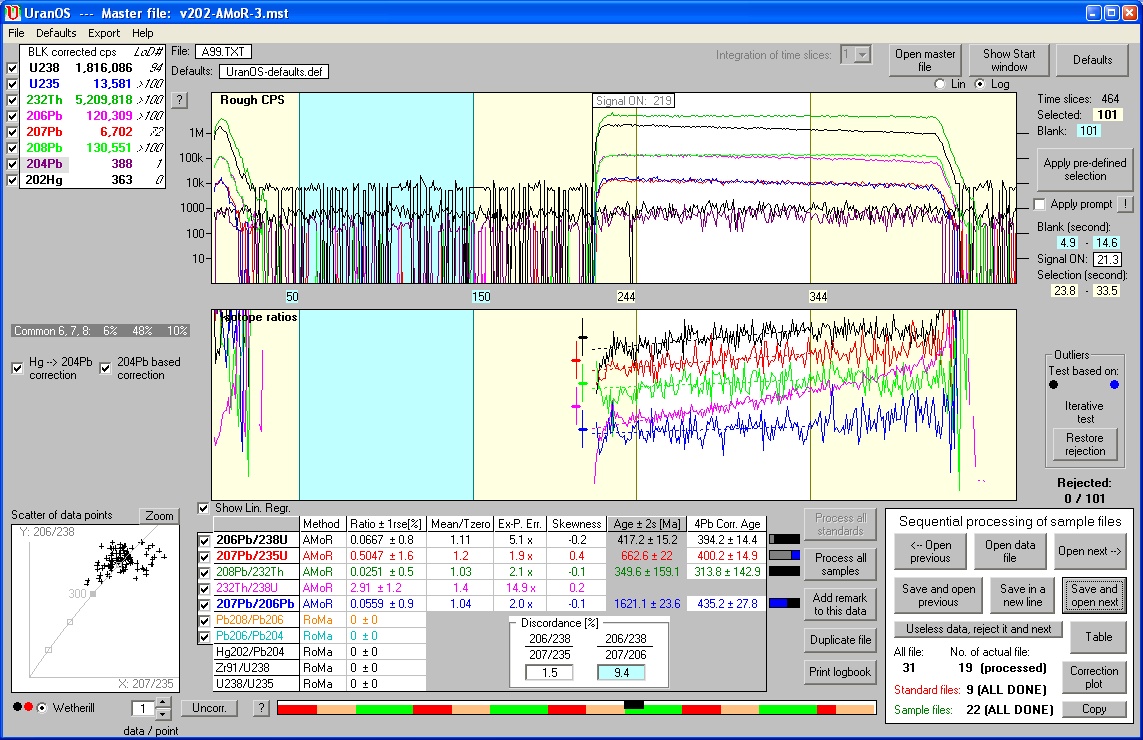
Structure and
temporal growth of the master file.
This example demonstrates only one isotope ratio; the master file actually contains
other isotope ratios, all cps values with errors and the conditions of time
interval selection and data reduction.
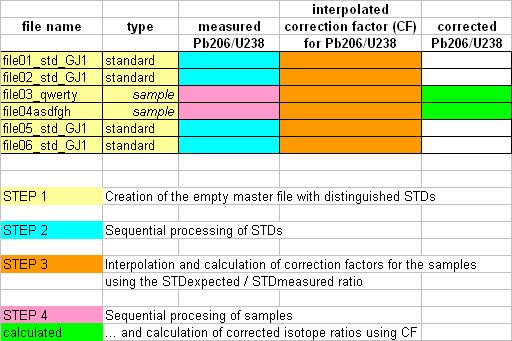
1st step at sequential
processing: compilation of the "Master file" with the list of files:
If the creation time of the files are real then simply ordering them according
to time, otherwise according to the codes written in the file names.
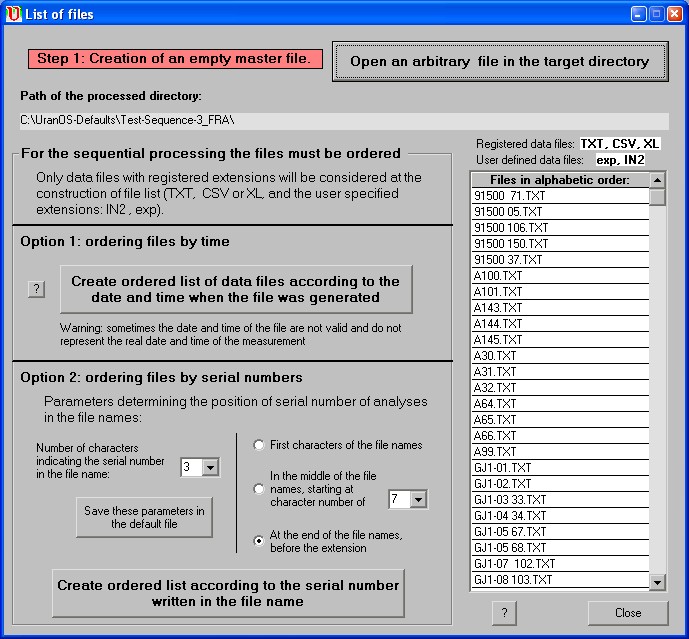
Selection of the primary standard:
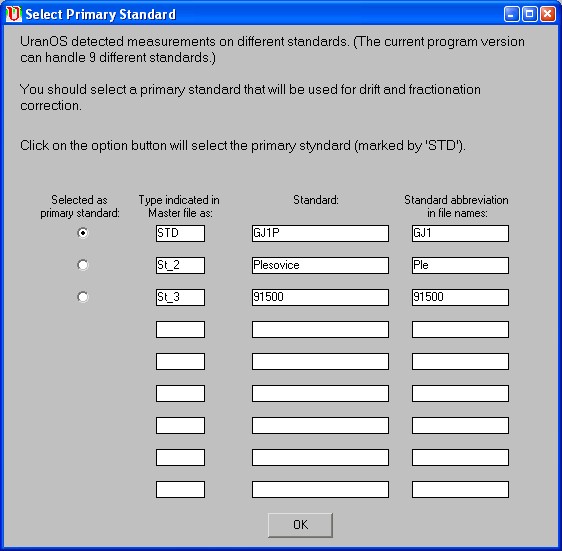
2nd step at sequential
processing: data reduction of standard files.
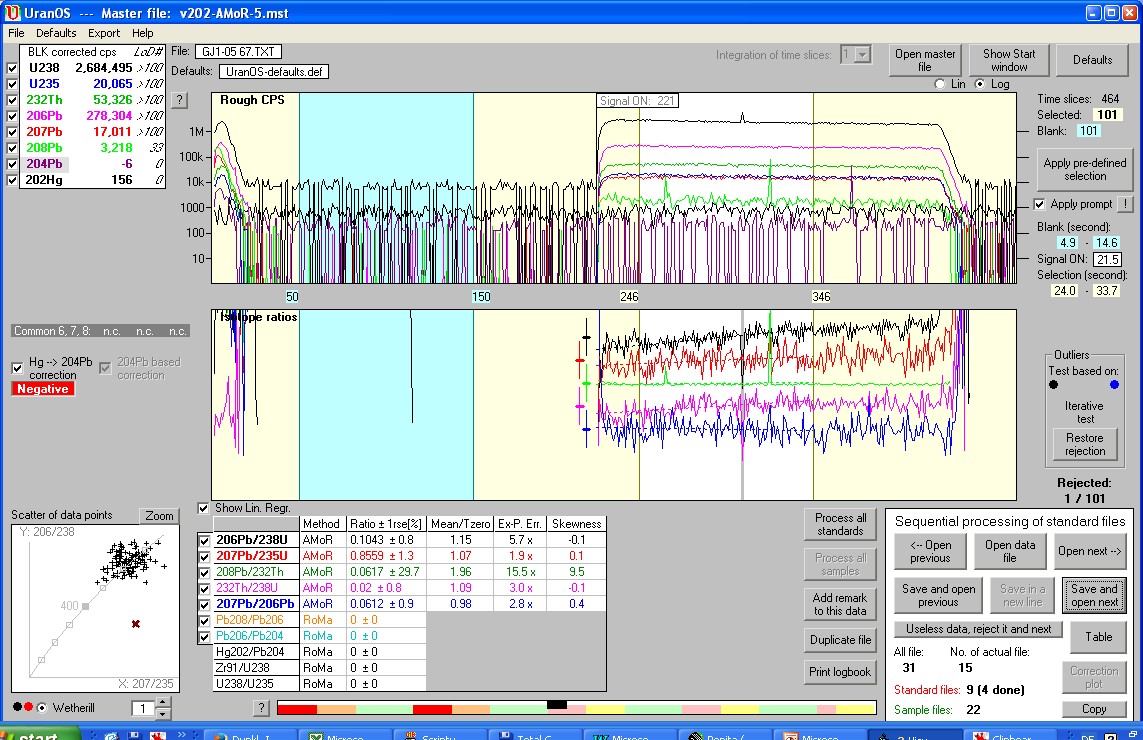
3rd step at sequential processing: Drift and fractionation
correction - interpolation between the normalized standard measurements:
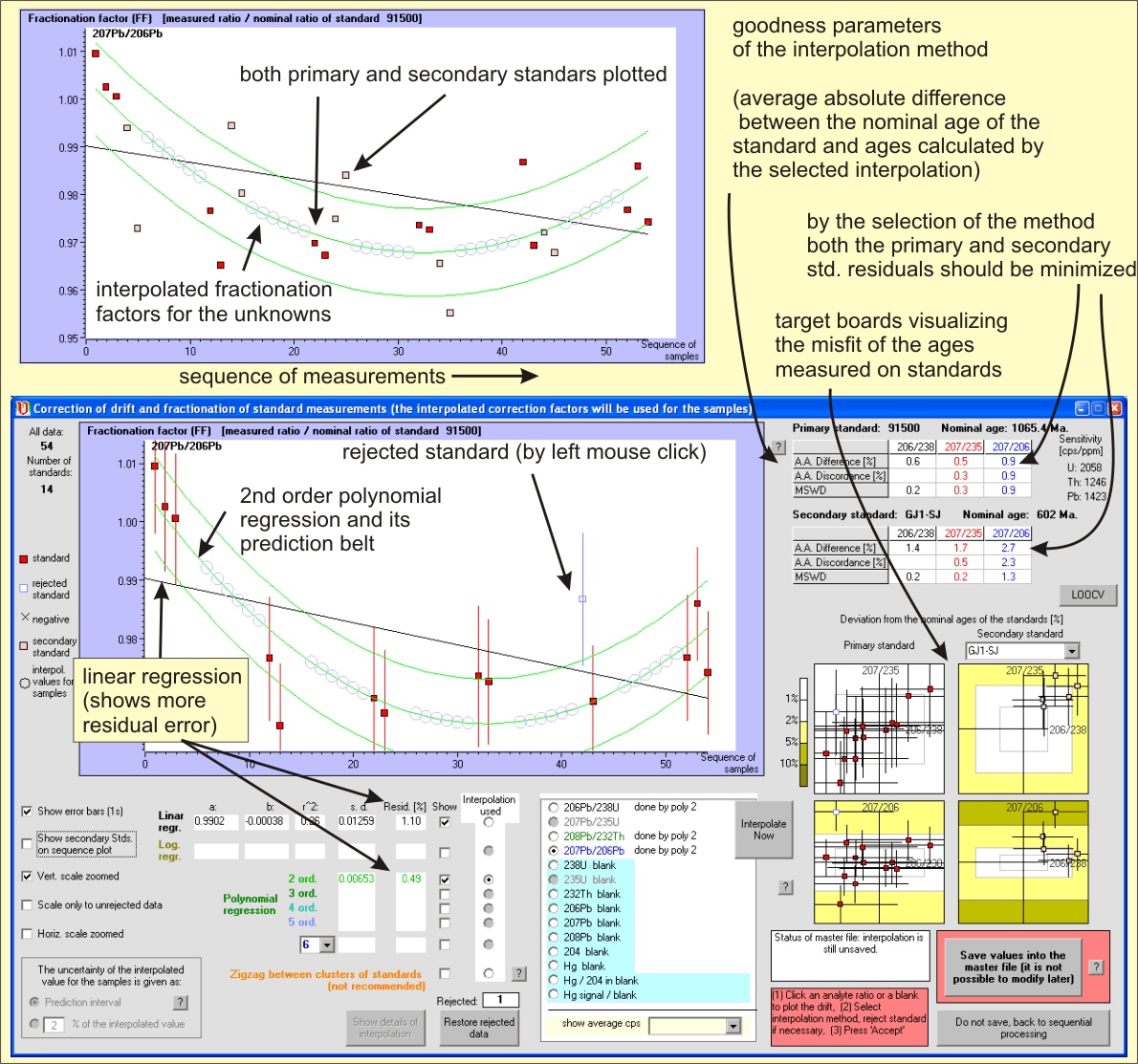
4th step at sequential processing: data reduction of sample files and results shown in table:
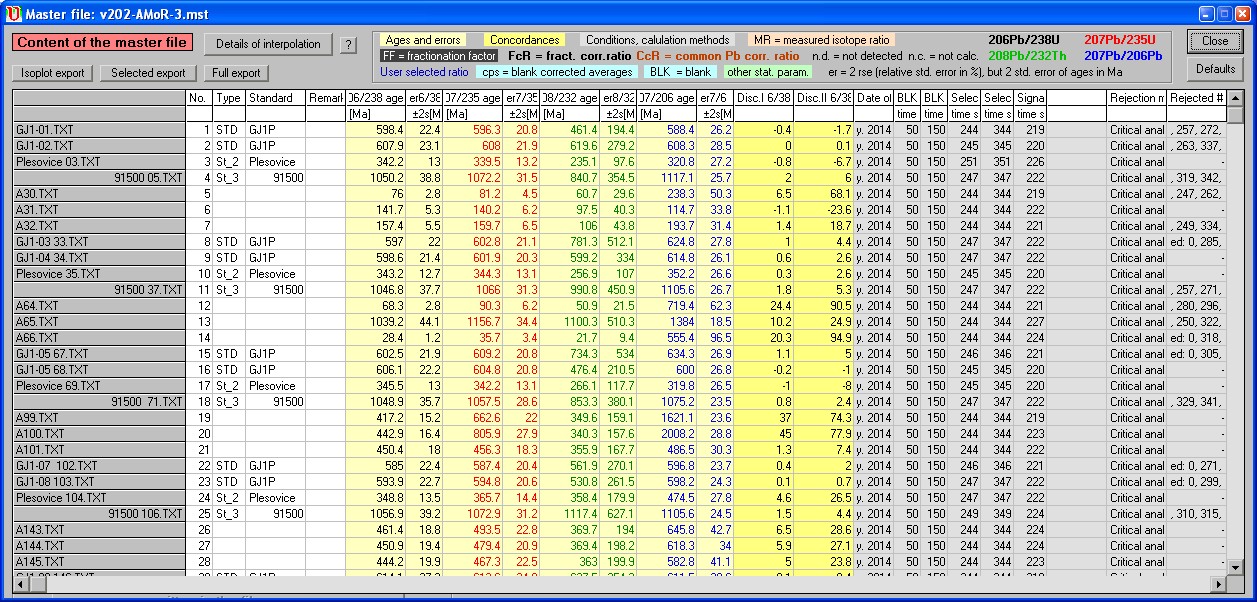
Import filter for the own data files (needed to use only once):
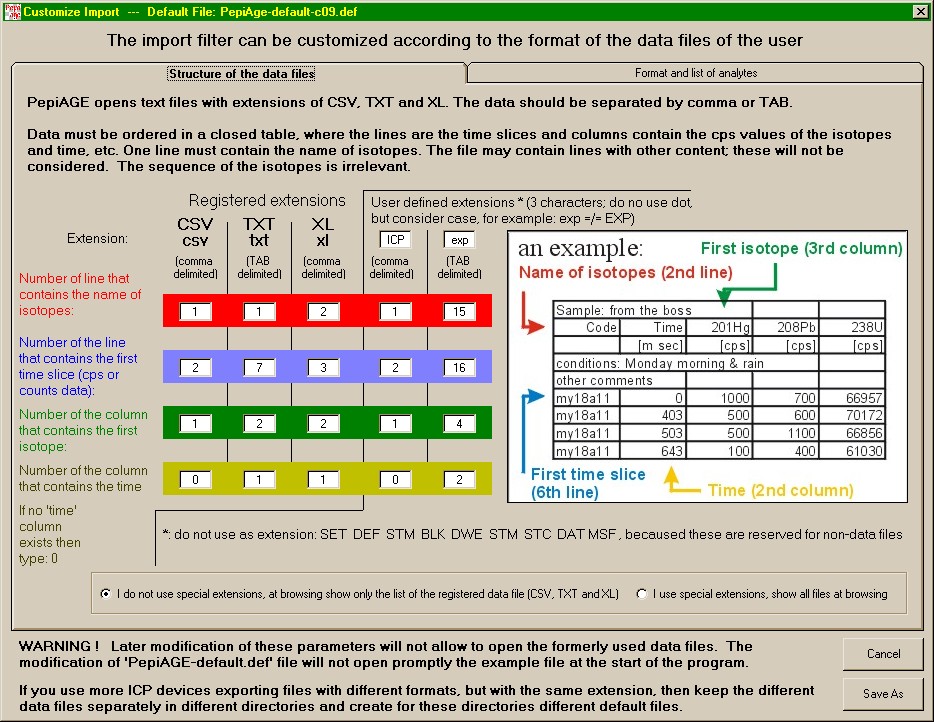
Some default windows:
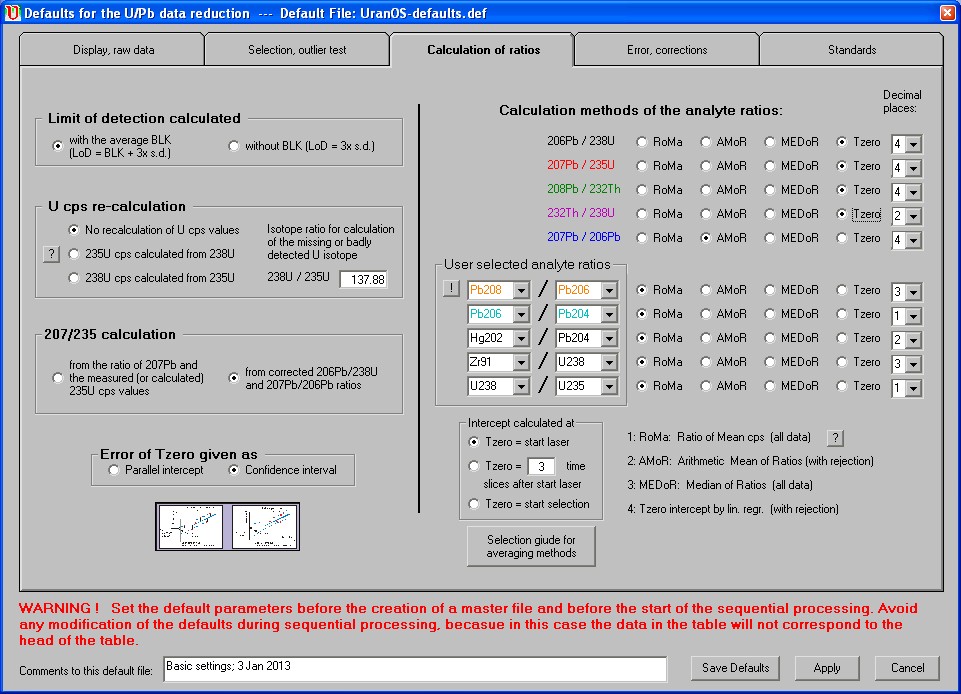
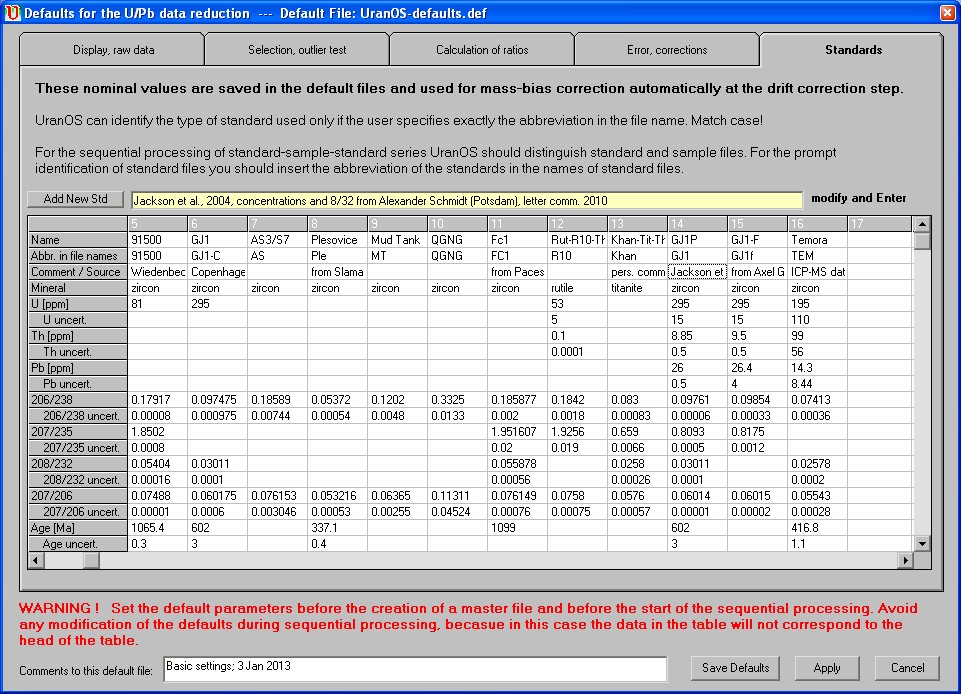
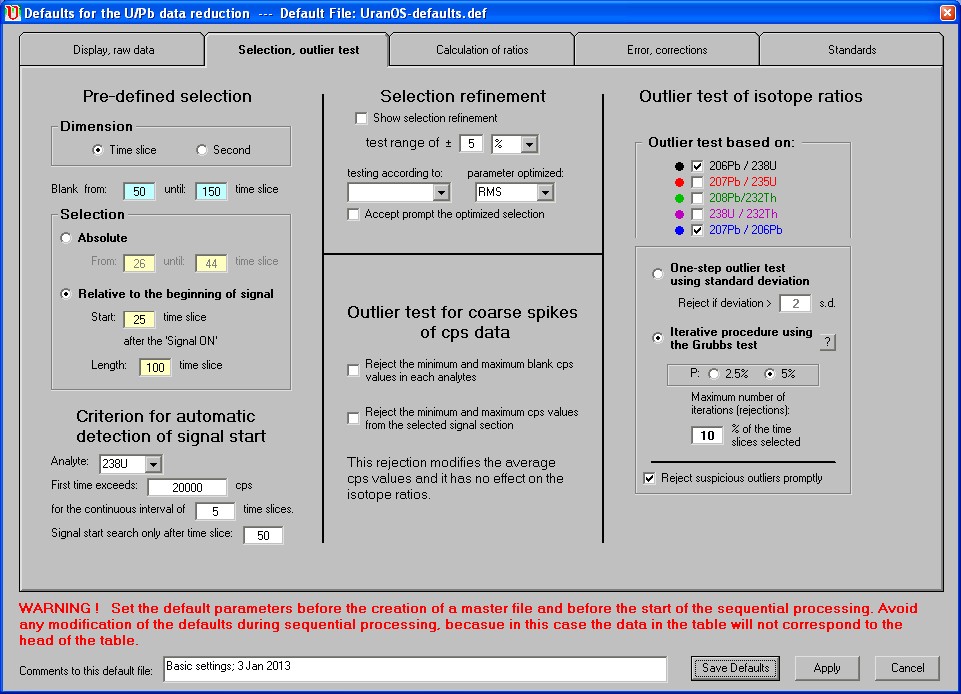
Prefences for the export of the results
